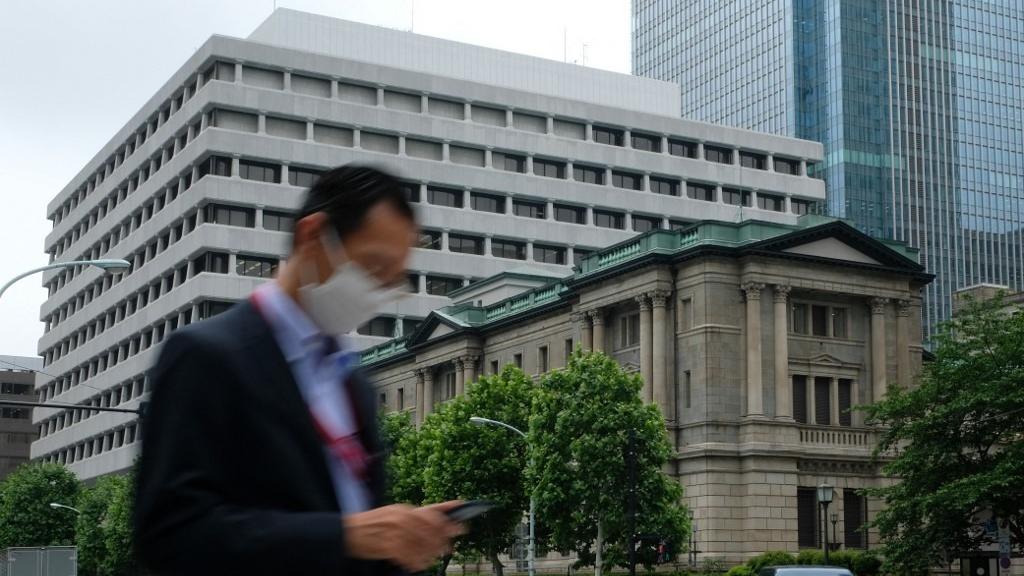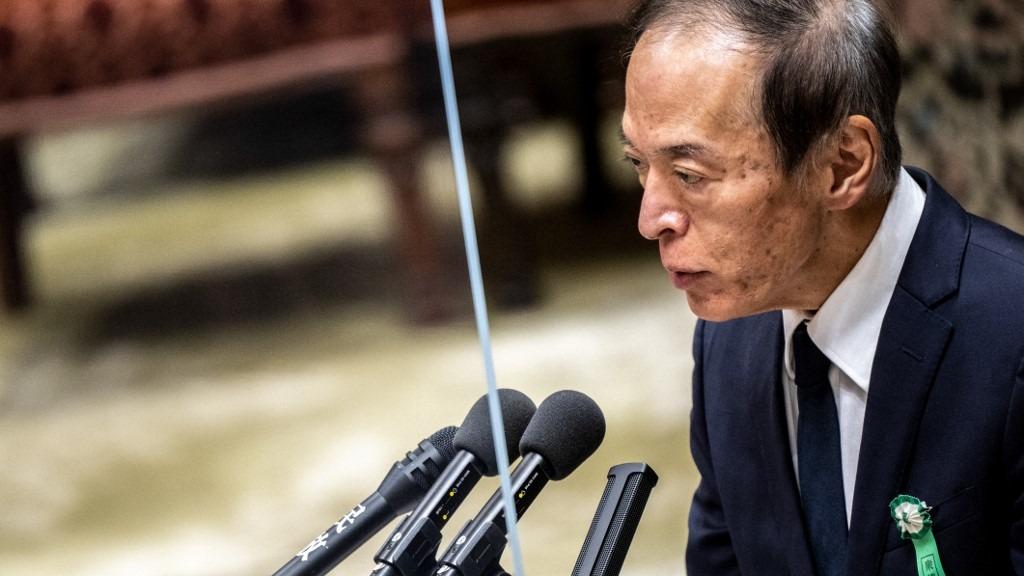 A man wearing a face mask walks past the Bank of Japan headquarters in Tokyo on May 22, 2020. (PHOTO / AFP)
A man wearing a face mask walks past the Bank of Japan headquarters in Tokyo on May 22, 2020. (PHOTO / AFP)
TOKYO - Economist Kazuo Ueda replaced Haruhiko Kuroda as governor of the Bank of Japan (BOJ) on Sunday, marking the start of his five-year tenure.
Analysts believe that Ueda will be faced with the challenge of how to exit the ultra-loose monetary policy after 10 years of massive easing. With the Japanese economy in the doldrums and the world economy facing downward pressure, the BOJ's pursuit of normalizing monetary policy may not be easy.
Former Governor Kuroda left the top job after a decade-long stint on Saturday, admitting that the central bank's 2 percent inflation target was not achieved in a stable manner as the central bank had hoped.
ALSO READ: Kuroda departs BOJ after inflation 'fails to fly'
In 2013, Kuroda took office with an ultra-loose monetary policy, aiming to raise inflation to 2 percent within two years. But its aggressive monetary easing failed to lift Japan out of deflation. Inflation only briefly touched 2 percent in 2014 due to the increase in consumption tax rate, and has been below 1 percent in other years.
Under Ueda's leadership, the quantitative easing policy itself will continue, but the existing unconventional mechanism will be carefully reassessed in an effort to mitigate the side effects, said Takahide Kiuchi, an economist at Nomura Research Institute
In 2022, due to soaring prices of imported goods and sharp depreciation of the yen, Japan's inflation rate reached 2.3 percent. However, the BOJ pointed out that such cost-push inflation was distinct from the demand-expanding inflation it has pursued.
While failing to achieve the policy goals, the ultra-loose monetary policy has caused a false prosperity in the financial market with a sharp depreciation of the yen and a rapid rise in the stock market, and has exposed many other problems.
First, the bond market has been severely distorted and financial policy lost its flexibility. The BOJ has implemented the yield curve control program for a long time. By buying a large amount of bonds, the 10-year government bond yield has been controlled within the target range, which caused the bond price to deviate from the reasonable range. As a result, the market pricing function was questioned, and the liquidity of the Japanese bond market tends to decline.
ALSO READ: New BOJ chief to slowly unwind Kuroda's policy experiment
Secondly, the BOJ has become "a cash machine" that the government cannot get rid of, and the fiscal dependence on debt has increased. According to data released by the central bank, as of the end of September 2022, the Japanese government's outstanding bond balance stood at 1,066 trillion yen ($7.56 trillion), of which the BOJ owned 536 trillion yen, accounting for more than half. The rare situation is one of the main reasons that the BOJ is widely expected to have to seek to normalize monetary policy.
Thirdly, a large number of "zombie enterprises" exist for a long time, which has dampened production efficiency. Continued monetary easing has made it easier for companies that should have left the market to get financing and stay in business, which slowed down the metabolism of Japanese industries and weakened economic vitality.
Last December, the BOJ announced a shift in its ultra-loose monetary policy, raising the yield on the 10-year Japanese government bond as high as 0.5 percent from a previous cap of 0.25 percent, a move interpreted by markets as the start of a policy adjustment and a de facto interest rate hike.
 Kazuo Ueda, then a candidate for the new governor of the Bank of Japan, speaks during a Q&A session at the House of Representatives of the parliament in Tokyo on Feb 24, 2023. (PHOTO / AFP)
Kazuo Ueda, then a candidate for the new governor of the Bank of Japan, speaks during a Q&A session at the House of Representatives of the parliament in Tokyo on Feb 24, 2023. (PHOTO / AFP)
After taking office, Ueda is urged to focus on the balance between policy inheritance and revision, and to coordinate the relationship between the government, the market, and various economic entities
During his confirmation hearings in parliament in February, Ueda has expressed his intention to continue the central bank's current easing policy for the time being, while admitting that the policy has side effects. The 71-year-old said that he will start to examine the effect of the long-term monetary easing, adding that there are multiple possibilities for policy revisions.
READ MORE: BOJ's policy tweak drew rare request from govt for a break
Under Ueda's leadership, the quantitative easing policy itself will continue, but the existing unconventional mechanism will be carefully reassessed in an effort to mitigate the side effects, said Takahide Kiuchi, an economist at Nomura Research Institute.
On a global front, the spillover of risks from the US financial system has caused turmoil in the European banking industry, and Japan is not immune to it. Many Japanese financial institutions have invested heavily in bonds because of the country's long-term, ultra-low interest rate, Kyodo News reported.
The interest rate hikes by the central banks of the United States and Europe, as well as market expectation on the BOJ's rate hike, have brought Japanese financial institutions heavy pressure both from home and abroad and their book losses ballooned rapidly, said the report.
ALSO READ: Japan's economy runs below capacity, low rates may stay
Japanese media and experts believe that the protracted ultra-loose monetary policy without effectively tackling deflation could become a stumbling block to economic growth.
On the other hand, if the policy is adjusted too hastily, it may well pose a huge risk to the current sluggish recovery of the Japanese economy.
After taking office, Ueda is urged to focus on the balance between policy inheritance and revision, and to coordinate the relationship between the government, the market, and various economic entities. It is expected that there will be no "sharp turn" in the adjustment of Japan's monetary policy.


